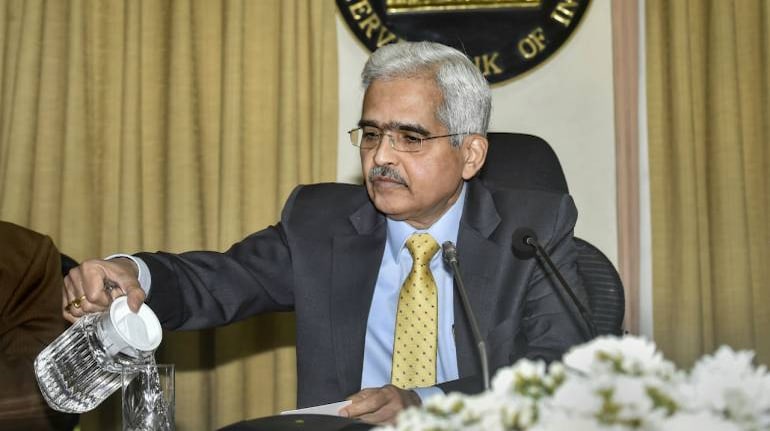



As the COVID-19 outbreak wreaked havoc on the economy, the Reserve Bank of India (RBI) responded quickly to make sufficient liquidity available for banks to lend to targeted segments. Since its first intervention, the central bank has repeatedly assured markets about its readiness to step in at any point when system is short of liquidity.
But despite the central bank's alacrity, NBFCs and smaller companies are getting the rough end of the stick.
Cheap money, but no takers
When the RBI made regulations stringent in its second round of targeted long-term repo operation 2.0 (TLTRO 2.0) by making it mandatory for banks to lend half of the money availed to small NBFCs and MFIs, banks played a trick.
In the TLTRO 2.0 auction, bids worth only Rs 12,850 crore were received against the Rs 25,000 crore funds offered at the auction. Banks simply didn't want to avail this money and lend to small firms. Reason: fear of future bad loans. Just like TLTRO, the RBI's liquidity window for mutual funds to the tune of Rs50,000 crores too may not have much demand.
"I don't see them taking lower rated corporate debt as collateral, which has been lacking in liquidity. So if we see heavy redemption in schemes which carry large exposure to lower rated corporate debt, liquidity will remain a problem," said Arvind Chari, Head - Fixed Income & Alternatives, Quantum Advisors.
Also Read: RBI in battle-ready mode, says Shaktikanta Das on liquidity needs of NBFCs
Announcing the special liquidity facility, the RBI said under this window, the RBI will conduct repo operations of 90 days tenor at the fixed repo rate of 4.4 percent. Funds availed under this window can be used by banks exclusively for meeting the liquidity requirements of MFs by extending loans, and undertaking outright purchase of investment-grade corporate bonds, commercial papers , debentures and certificates of deposit held by MFs, RBI said.
Business Insight | What is all this fuss about TLTRO 2.0?
Under TLTRO, banks can borrow at 4.4 percent from the RBI and lend at 2-2.5 percent margin. Still, banks may not be too keen to lend against lower rated papers on account of the risks involved, industry officials said.
"Remember if the banks had this appetite, they could have used the LTRO money and bought these lower rated bonds from mutual funds in the secondary market," said Chari of Quantum Advisors.
According to Kumaresh Ramakrishnan, CIO, Fixed Income, PGIM India Mutual Fund, banks are in a wait-and-watch mode.
"We have to see how the response for this round. My sense is that banks will find this window attractive because of the arbitrage and given the fact that many good quality AA papers are in the market," he said.
Banks, in fact, have a decent business in RBI's TLTRO window. They get money at repo rate, 4.4 percent and can lend to companies at a rate 6.5 percent to 10 percent (for top rated firms). But, banks fear is that once the Covid-19 lock-down and moratorium is over, they will get stuck with these bad quality companies. Their lending decisions can get questioned at that time. Banks don’t want to take that risk.
Rating agencies too highlight banks' risk aversion. According to rating agency, Icra, with excess liquidity of around Rs 4.85 trillion as on April 24, 2020, banks however continue to remain largely risk averse.
"We expect the liquidity of the higher rated papers to improve on the back of this facility. Accordingly, active participation from the banks will be key to the success of this scheme," Icra said.
Low-rated papers don't have much demand in the market, a major reason why Franklin Templeton had to close six debt schemes. The credit risk funds had high exposure to below AA-rated funds. Over the past one year, these funds have witnessed immense redemption pressure.
NBFCs/MFIs affected most
Their risk aversion has affected NBFCs and smaller MFIs the most. Smaller NBFCs and MFIs have been deal a double whammy because these firms had to give moratorium to their borrowers but didn't get the same treatment from their lenders. NBFCs borrow from banks and raise money from money markets. With banks refusing moratorium and RBI’s liquidity support not reaching them, NBFCs and MFIs have found themselves in a tough spot.
Even the refinance window announced by the RBI for an amount of Rs 50,000 crore is not benefiting small NBFCs and MFIs on account of the stringent conditions. SIDBI, which has launched a scheme after availing Rs 15,000 crore from RBI under special liquidity support, wants MFIs to pay back money in 90 days. This, along with the condition of minimum –BBB rating, has made refinance scheme practically of little help for smaller companies.
"Ultimately, it is not the liquidity but fear among banks about future defaults that have made RBI’s liquidity schemes inaccessible for small companies," said an analyst with a Mumbai-based brokerage.
THE SOLUTION?
Bankers say if the government guarantees risks on bank lending to small companies, the problem of risk aversion will be addressed. According to a Bloomberg report , the Modi government is considering a proposal to guarantee as much as Rs 3 lakh crore of bank loans to small businesses, as part of a plan to restart the economy. This, bankers feel, can give lot of comfort to banks to lend to small firms.
Follow our full coverage of the coronavirus outbreak here
Discover the latest Business News, Sensex, and Nifty updates. Obtain Personal Finance insights, tax queries, and expert opinions on Moneycontrol or download the Moneycontrol App to stay updated!
Find the best of Al News in one place, specially curated for you every weekend.
Stay on top of the latest tech trends and biggest startup news.